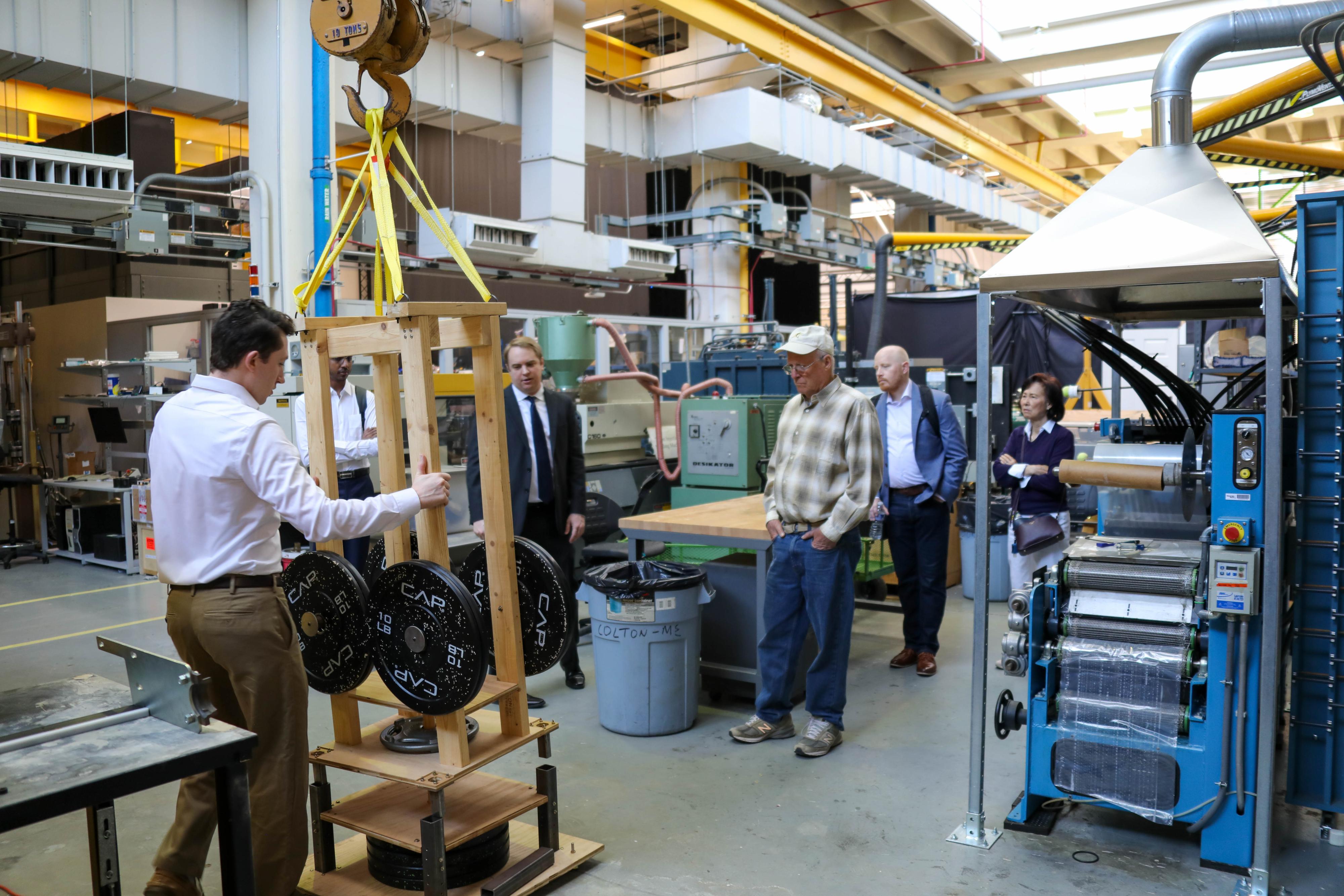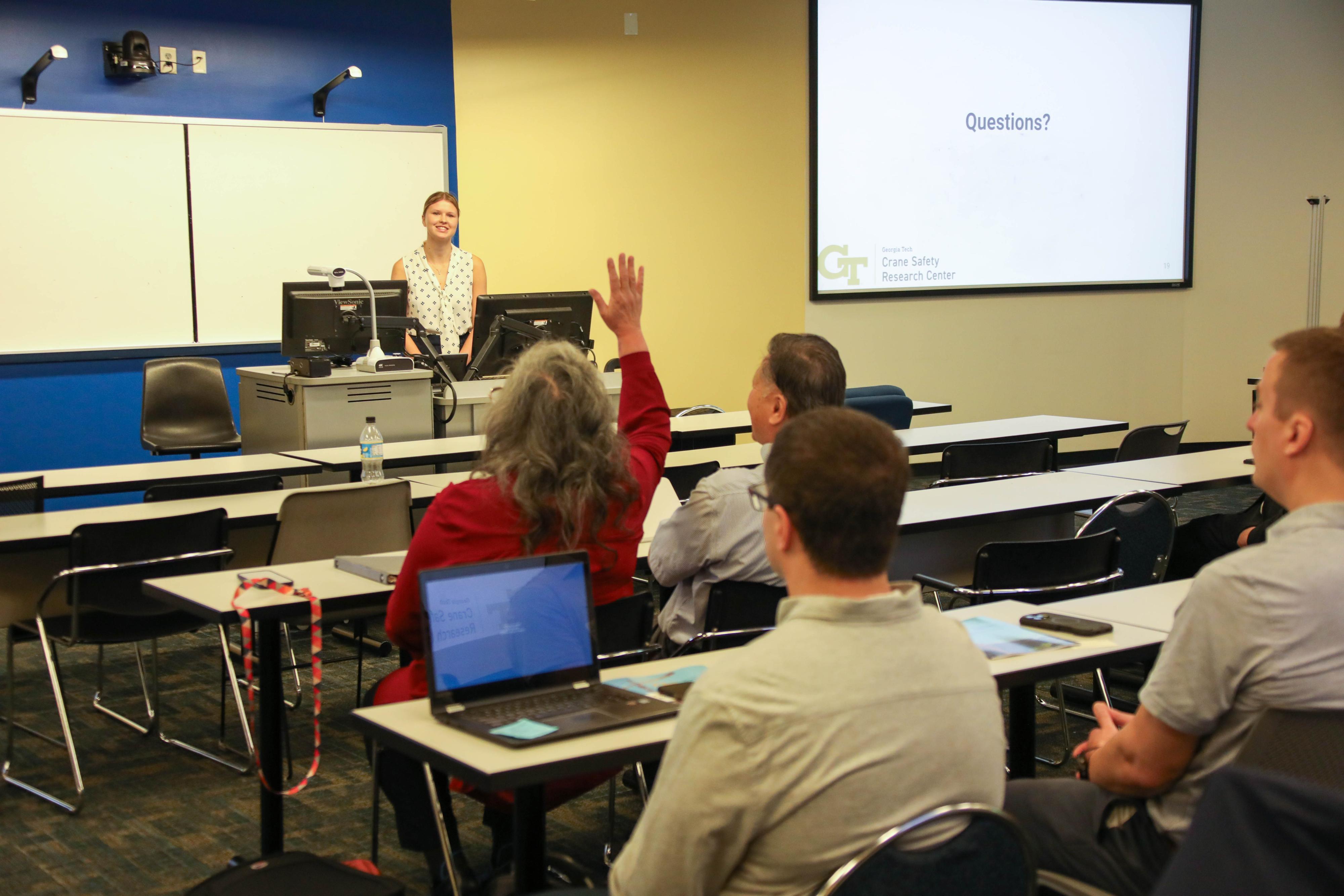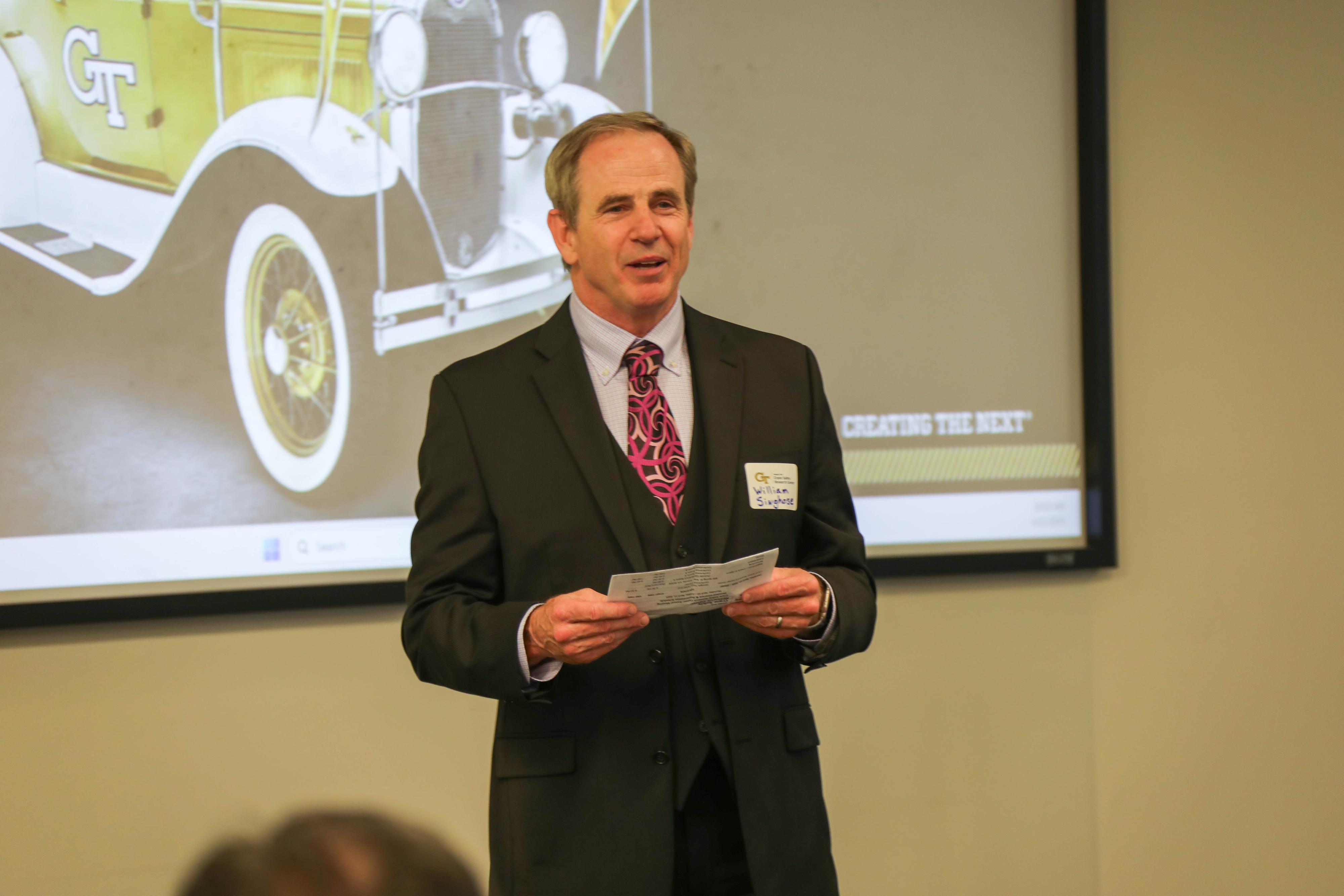
Georgia Tech Leads Research Push for National Crane Safety
Despite their widespread use, crane operations are poorly regulated, leading to numerous accidents. The Crane Safety Research Center aims to change that.
April 18, 2025
By Anne Wainscott-Sargent
Cranes are common features in urban skylines. Because construction projects are constantly beginning and ending, the exact number of cranes in use globally is unknown. What is known, however, is that cranes have caused hundreds of deaths and catastrophic injuries. In the U.S. alone, dozens of deaths occur annually, and the construction industry loses billions of dollars.
“Crane usage is not well regulated or well measured. A lot of accidents are not reported or cataloged — and for those that are, there’s often not a proper investigation,” noted William Singhose, professor in Georgia Tech’s George W. Woodruff School of Mechanical Engineering and director of the Crane Safety Research Center.
The center includes researchers from Georgia Tech, the University of Washington, Utah State University, construction equipment suppliers, and industrial automation specialists. Together, they hope to bridge the gap between engineering curricula, practical applications, and legislation.
“We have a six- to eight-year timeline of funding. Our directive is to improve crane safety,” Singhose said.
With the infusion of support, researchers don’t have to apply for funding, which will allow the researchers freedom to focus on pursuing innovative, meaningful ideas.
Researchers, Industrial Partners Gathered in Atlanta
To mark the center’s one-year anniversary, Georgia Tech hosted a one-day symposium in April to share the center’s latest research findings and priorities. Industry speakers presented information on crane operations and safety.
Attendees included university and industry collaborators, including a contingent from American Crane of Philadelphia. Also in attendance were the center’s funders, Andrea Wang and Henry Wong. They established the research center after losing their daughter, Sarah Pantip Wong, in 2019 in a Washington state crane accident.
A major thrust of their efforts involved championing crane safety legislation to protect the public, focused first in Washington. The state’s legislators unanimously passed this legislation in March 2024, and it will be implemented over the next three years. Part of the family’s efforts include supporting a certification process for crane assembly and disassembly directors, who are required by federal and state Occupational Safety and Health Administration laws to be onsite supervising the crane operations.
Focus on Crane Safety Legislation
Georgia Tech’s College of Design, under Dean and John Portman Chair Ellen Bassett, is working with the Crane Safety Research Center to draft model legislation state and federal lawmakers can use. Wong said that research coming out of academia could inform policymakers to help drive safer rules and procedures for protecting the public near tower cranes.
“The idea is to start a process where we can get information and research out there to enable better safety,” he said.
Wang emphasized that every time a crane-related tragedy occurs, it gets covered by the news and then vanishes until another accident happens. “People don’t realize that there is not a concerted effort to look at these incidents from a public safety perspective,” she said, adding that the way these accidents are categorized is not consistent.
Singhose, whose research focuses on the dynamics and control of flexible machines, says, “I’ve been working on cranes for more than 30 years. I’ve always known cranes are dangerous and challenging, and that it is important to control them better.”
Though the Bureau of Labor Statistics reports that in the U.S., an average of 44 people die in crane-related accidents; Singhose estimates the number is much closer to 200, when all crane-related machines are taken into consideration.
When Singhose was a toddler, his father was involved in a crane accident that hurt a close family friend. And in 2001, Singhose was at work in the Georgia Tech Manufacturing Institute when a crane accident destroyed a $750,000 machine inside the building. He later used that crane, stabilized by advanced technology, as a laboratory to test crane safety technologies.
Focus on How Accidents Happen, Crane-Control Technologies
Key innovations developed include anti-sway and anti-snag technologies to ensure cranes operate smoothly and avoid entanglement with building materials or supplies. According to Singhose, cranes move sideways when they are out of position, increasing the risk of these incidents. The risks are exacerbated on large cranes, where the operation is performed with joysticks or buttons, often from hundreds of feet away. Georgia Tech’s research has focused on advances including cable angle sensing for safe crane control, wind load modeling, and crane section lift-off modeling.
“Cranes are designed for their payload to hang straight down. They are not very strong sideways — that’s why wind tips them over,” said Singhose, adding, “Misalignment before the crane payload lifts off creates a double-swing problem, and that’s killed a number of people over the years.”
Georgia Tech has developed lift-off control technology and input-shaping techniques to address these issues. Christopher Adams, a mechanical engineering research engineer and assistant director of the center, said his interest in crane safety grew out of his research looking at how to stabilize helicopters carrying suspended loads; helicopters are, in essence, flying cranes.
“Because there are so many kinds of cranes and ways to make them safer, our projects are pretty broad. They range from studying existing standards and regulations to technologies to make cranes safer, and that keeps it interesting,” said Adams.
Wind and electrical lines play major roles in crane accidents. One of the most notorious wind-induced crane accidents occurred in 2015 at Mecca’s Grand Mosque, Islam’s holiest site. Extreme weather conditions, including high winds, caused a crane collapse that killed more than 100 people.
And operating cranes near power lines often increases the severity of accidents. “A fairly large percentage of deaths and injury are caused by electrocution,” said Adams.
The researchers stressed that crane accidents are rarely caused by a single factor. Instead, they are often the result of human error, compounded by additional contributing elements.
“I’ve investigated a number of crane accidents, and it usually takes three things to go wrong,” explained Singhose, observing that cranes are robust enough to handle one thing going wrong — but not the cumulative effect of multiple issues.
Key Research Insights
Both Singhose and Adams reiterated the importance of moving a crane without swinging the payload. As cranes have gotten taller and taller, industry standards on how to reinforce these cranes and prevent accidents haven’t kept up.
Adams contributed to a recent Georgia Tech paper examining how industry standards intended to prevent tip-overs of mobile boom cranes provide a decreasing stability margin as mobile cranes have gotten taller. A smaller stability margin means a crane more easily tips over.
Another big challenge is that crane safety standards are not mandatory but voluntary.
“The way they really get enforced is through lawsuits after a tip-over kills somebody,” Singhose said.
For Andrea Wang, the real indication of positive change will be when the construction industry stops assigning blame for crane accidents and instead embraces education and prevention. As a pharmacist, she has seen this transformation in healthcare with how the industry handles medication errors.
“It’s all about safety. Not until you start changing the culture will mindsets change,” she said. “That’s what needs to happen.”

To mark the center’s one-year anniversary, Georgia Tech hosted a one-day symposium in April to share the center’s latest research findings and priorities. Industry speakers presented information on crane operations and safety.

William Singhose, professor in Georgia Tech’s George W. Woodruff School of Mechanical Engineering and director of the Crane Safety Research Center
